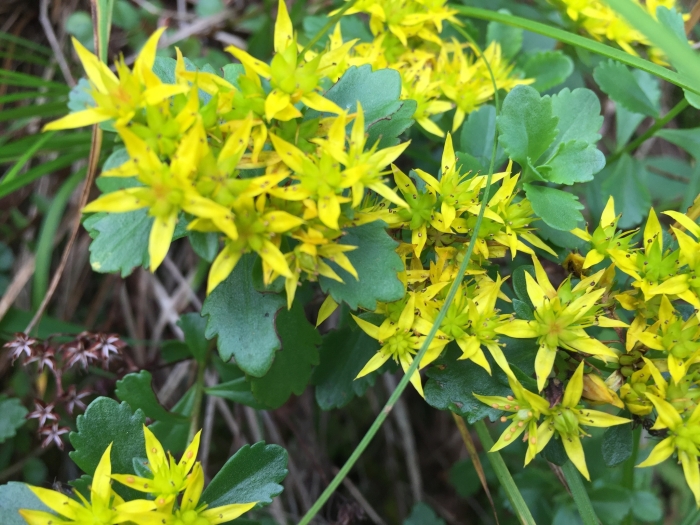Orange Stonecrop
(Phedimus kamtschaticus)
Orange Stonecrop (Phedimus kamtschaticus)
/
/

Matt Scott
CC BY 4.0
Image By:
Matt Scott
Recorded By:
Copyright:
CC BY 4.0
Copyright Notice:
Photo by: Matt Scott | License Type: CC BY 4.0 | License URL: http://creativecommons.org/licenses/by/4.0/ | Rights Holder: Matt Scott | Publisher: iNaturalist | Date Created: 2019-07-27T08:30:29Z |

























Estimated Native Range
Summary
Phedimus kamtschaticus, commonly known as orange stonecrop, is a succulent perennial herb native to alpine and subalpine zones, rocky outcrops, and volcanic slopes in Northeast Asia, including China, Korea, Japan, and the Russian Far East, particularly Chukotka. It typically forms low-growing mats reaching 4 to 6 inches (10 to 15 cm) in height and spreading up to 12 inches (30 cm) wide. The plant features fleshy, spoon-shaped leaves that are green with a tinge of red, especially in full sun. From late spring to midsummer, it produces clusters of star-shaped, bright yellow to orange flowers that are particularly showy and attract pollinators.
Orange stonecrop is valued for its drought tolerance and ability to thrive in poor, rocky soils, making it an excellent choice for rock gardens, green roofs, and as ground cover in xeriscaped areas. It is also used in border planting and containers for its attractive foliage and flowers. This plant prefers full sun to light shade and requires well-drained soil. It is generally low-maintenance, but overwatering can lead to root rot. In regions where it is not native, care should be taken to prevent it from becoming invasive. Under its synonym Sedum kamtschaticum, it has gained the Royal Horticultural Society’s Award of Garden Merit for its ornamental qualities and garden performance.CC BY-SA 4.0
Orange stonecrop is valued for its drought tolerance and ability to thrive in poor, rocky soils, making it an excellent choice for rock gardens, green roofs, and as ground cover in xeriscaped areas. It is also used in border planting and containers for its attractive foliage and flowers. This plant prefers full sun to light shade and requires well-drained soil. It is generally low-maintenance, but overwatering can lead to root rot. In regions where it is not native, care should be taken to prevent it from becoming invasive. Under its synonym Sedum kamtschaticum, it has gained the Royal Horticultural Society’s Award of Garden Merit for its ornamental qualities and garden performance.CC BY-SA 4.0
Plant Description
- Plant Type: Succulent
- Height: 0.5-1 feet
- Width: 1-1.5 feet
- Growth Rate: Slow
- Flower Color: Yellow
- Flowering Season: Spring
- Leaf Retention: Evergreen
Growth Requirements
- Sun: Full Sun
- Water: Low
- Drainage: Fast
Common Uses
Deer Resistant, Drought Tolerant, Fire Resistant, Groundcover, Low Maintenance, Rabbit Resistant, Rock Garden, Showy Flowers, Street Planting
Natural Habitat
Alpine and subalpine zones, rocky outcrops, and volcanic slopes in Northeast Asia
Other Names
Common Names: Orange Stonecrop, Kamschatka Stonecrop, Russian Stonecrop
Scientific Names: , Phedimus kamtschaticus, Aizopsis kamtschatica, Aizopsis kurilensis, Aizopsis takesimensis, Aizopsis zokuriensis, Phedimus takesimensis, Phedimus zokuriensis, Sedum aizoon subsp. kamtschaticum, Sedum aizoon subsp. middendorffianum
GBIF Accepted Name: